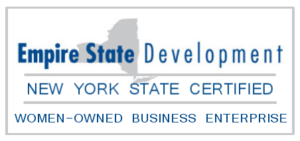
By: Leonardo Lampret, Associate Attorney
In New York Workers’ Compensation law, Prima Facie Medical Evidence (PFME) is the threshold requirement to proceed with the claimant’s workers’ compensation claim. PFME is defined as a medical report referencing an injury, including trauma or illness (12 NYCRR § 300.1[a][9]; 12 NYCRR 300.38[g][1]). However, this evidence does not need to explicitly link the injury to the claimant’s employment (Garti v. Salvation Army, 80 A.D.3d 1101 [2011]).
What Qualifies as PFME?
For a report to meet PFME requirements, it must contain a diagnosis of an injury, trauma, or illness. A diagnosis of pain alone is insufficient because pain is considered a symptom, not a condition (Majestic Restore, WCB# G290 6489, Aug. 16, 2021).
Additionally, the medical report must include details about the mechanism of injury—in other words, a description of how the injury occurred. This requirement ensures that there is enough information for the Board and the insurance carrier to determine whether the injury has any connection to the claimant’s employment (Mount Vernon BD of Education, WCB# G103 4761, June 27, 2024). Without this crucial element, the report does not qualify as PFME.
Direct vs. Consequential Injuries
When a claimant files a workers’ compensation claim, it is essential to distinguish between a direct and a consequential injury. A direct injury occurs immediately due to a workplace incident, whereas a consequential injury develops as a result of an established work injury.
A key legal distinction is that WCL § 21 presumptions do not apply to consequential injuries. Atkinson v. Joseph Baldwin Const., 43 A.D.3d 1240 [2007]. This means that, unlike direct injuries, the claimant must provide affirmative medical evidence showing that the claimant actually has a consequential injury. Most of times, the medical report has at least stated that the new injury is a direct and natural consequence of the initial work-related injury.
Why Does Distinction Matter?
If a new body part is raised in an ongoing claim, it is crucial to determine whether the injury is direct or consequential, primarily due to the statute of limitations under WCL § 28. This law requires that a claim for a direct injury be filed within two years of the accident. However, a consequential injury can be added later without being time-barred. Caezza v. Via Health, 111 A.D.3d 1033 [2013]. In other words, if the claimant is seeking to amend the claim after 2 years for a direct injury or prosecuting the claim after 2 years of the date of the injury for direct injury, then you may have WCL § 28 and get the claim barred, and disallowed. However, if the claimant raises consequential injury, WCL § 28 defense is not applicable.
Can a Consequential Injury Be Barred?
Yes. If a claimant delays too long in raising a consequential injury, the doctrine of laches may be applied to bar the claim. The doctrine of laches is an equitable principle that prevents a party from asserting a claim after an inexcusable delay that prejudices the opposing party.
For example, in Expedite Construction (WCB# G177 1560, Sept. 24, 2019), the claimant failed to submit timely PFME for a neck injury, leading to dismissal under laches. Similarly, in Bassett Hospital of Schoharie (2022 NY Wrk Comp 50809543, Jan. 10, 2022), the Board denied a consequential injury claim due to prolonged inaction. These cases demonstrate that waiting too long to assert a claim can lead to its dismissal, even if the injury is otherwise valid.
Tip for Adjusters and Employers: Be Proactive, Not Passive
Adjusters and employers must aggressively scrutinize medical reports at the PFME stage to prevent the claim moving forward. Do not assume that every submitted report is valid PFME—carefully review whether the document includes an actual diagnosis, details about the mechanism of injury, and whether they are properly executed according to Expanded Provider Law. If any of these elements are missing, challenge the PFME immediately.
When a claimant raises a new body part, always ask:
- Is this a direct injury or a consequential injury?
- Was the claim filed within the statute of limitations?
- Has the claimant provided proper medical support?
If the injury is consequential, hold the claimant to their burden of proof. They must submit medical evidence showing that the new condition stems from the original injury. If they fail to do so in a timely manner, invoke laches to get the claim dismissed.
Delays in raising an injury, vague medical reports, or reliance on pain diagnoses should all raise red flags. Adjusters should work closely with defense attorneys to challenge weak PFME submissions early.

